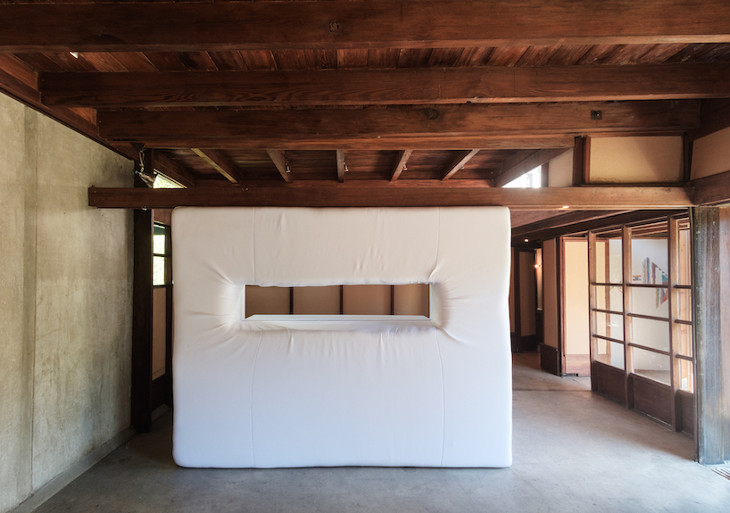Shelter or Playground: The House of Dust at the Schindler House
Lila Athanasiadou
inner-counter-space
2019
Wood, foam, neoprene
Throughout her artistic oeuvre, Alison Knowles used scores as linguistic instructions for human and machinic performers that counter the efficiency of the functionalist imperatives. Historically, in the logic of the capitalist-technological system, ergonomics functions as the “fit” between body performance, spatial configuration and time management in order to increase productivity. Since women entered the labour force, the house was treated as an extension of the factory and ergonomics entered the domestic sphere through designs of spaces of reproductive labour. The Schindler house is an early example of a domestic space that sought a hybridization of work and life to counter the cruelty of functionalism. Since then, work/life interiors have become the spaces where the efficiency imperative seeps into bodies through this same blurring of functions. Labour hours expand and leak into all other aspects of one’s life, making the distinction between labour and leisure impossible. The installation unpacks histories of work/leisure hybridization and the ergonomics of domesticity as an example of architecture functioning as the spatial organization of exhaustion while countering it, formulating possibilities for slippages. The structures have four parts that each in a different way (plasticity, flexibility, transparency and opacity) organizes separations and boundaries between spaces and bodies.
